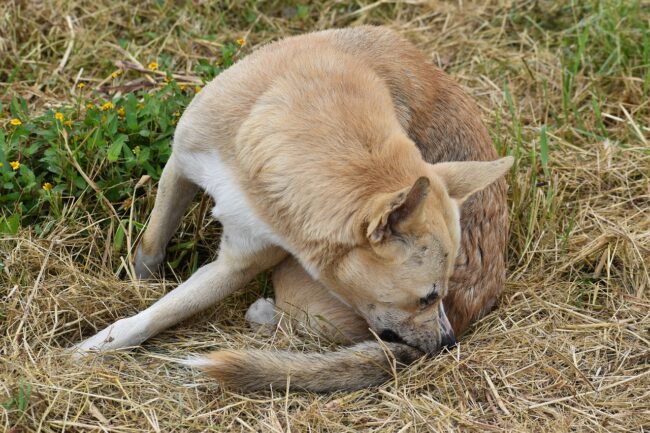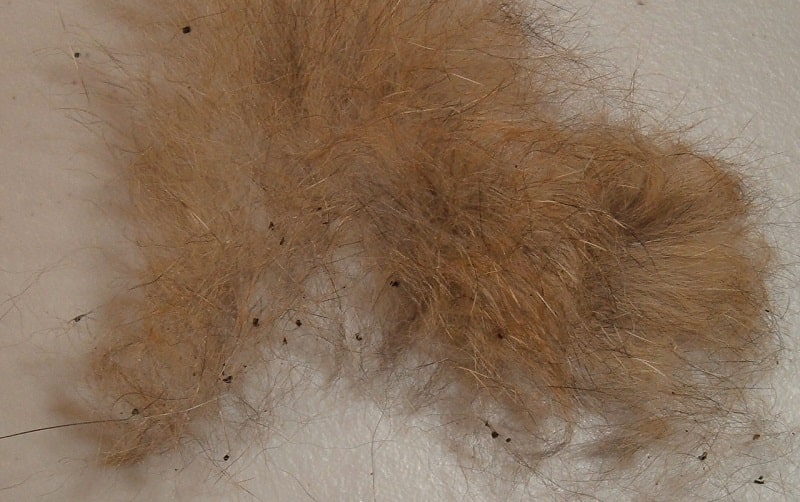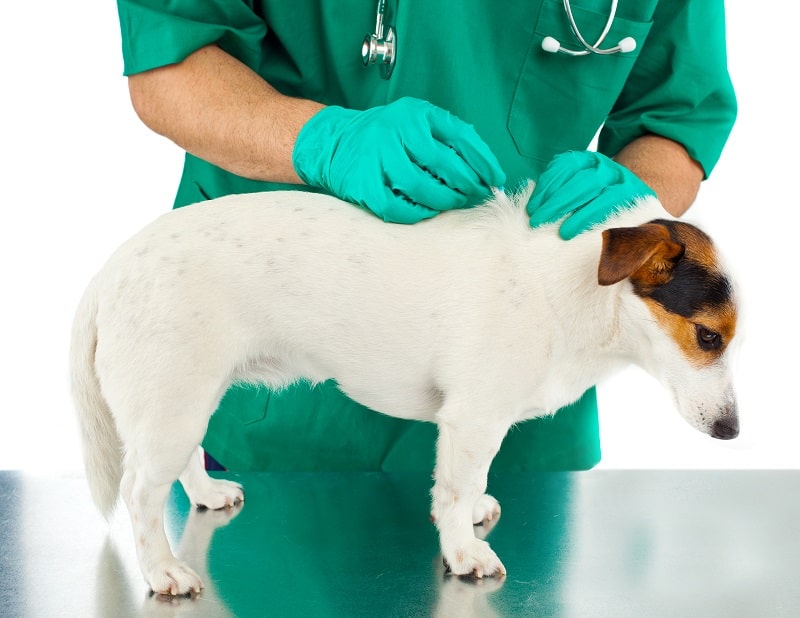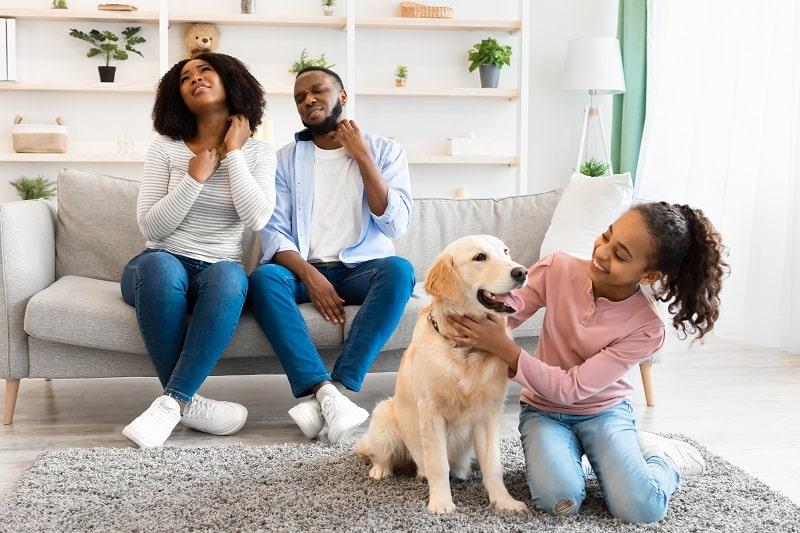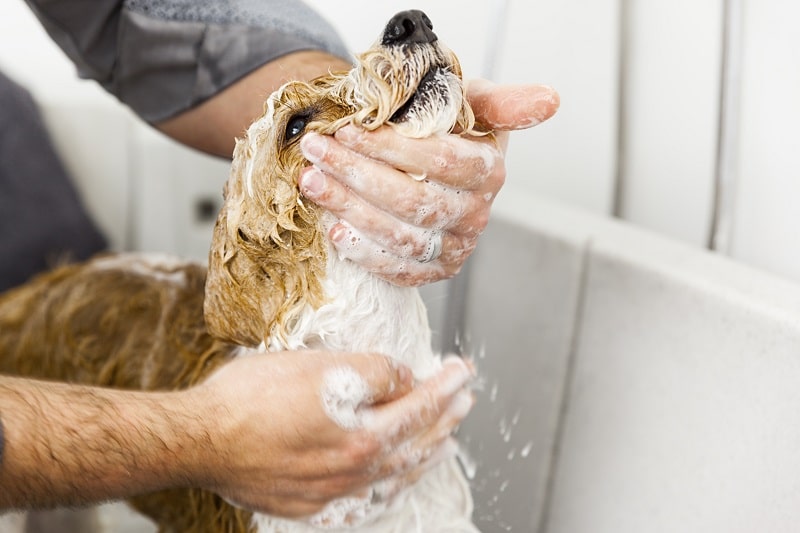Table of Contents
Dogs will suffer from fleas at some point. These are pesky parasites that can cause itchy skin conditions and allergic reactions. Fortunately, there is a simple way to discover if your dog has got fleas – flea dirt. Is your pup scratching more than usual? Check for flea dirt to confirm an infestation.
In this post, let us try to understand what it is and how to get rid of flea dirt on dogs.
Flea Dirt on Dogs – What Does It Mean?
Flea dirt is generally seen on your dog’s skin and looks like small black specks. They are tiny and feel rough and grainy to touch. Flea dirt consists mainly of the old blood of your pup that the fleas have sucked up. Even when no live fleas are seen on the pet’s skin, any existence of flea dirt indicates that either your pet or your home has an infestation.
Flea dirt looks similar to regular dirt and can be easily mistaken for it. But you can confirm flea dirt by taking it on a wet paper towel and observing if it looks red like blood. It can be spotted on the fur or skin of your pet and revealed by running a comb or finger against the hair growth direction. Once you see flea dirt on the skin or fur of the dog, it means either your pup has fleas or they are present in your home.
Many pet owners wonder whether a pup can have flea dirt but no fleas. Though it is possible that the pet just got a dropping, it is not advisable to assume this. A flea that dropped its waste on the pet is likely to have fed on the animal. Female fleas feeding on the pet can lay eggs quickly. So when you see flea dirt and no live fleas, it means fleas are hiding somewhere on the pet or in the home.
How To Get Rid of Flea Dirt on Dogs?
Flea dirt does not go on its own. You must get rid of the fleas to get rid of flea dirt on dogs. While the most effective solution depends on the pet’s age, size and health, it is best to consult a vet who can suggest a good plan for eradication and prevention, including a topical and ingestible medication for the pet along with home treatment for an infestation.
As the first step, you should give your pet a good bath with an anti-flea shampoo and leave the solution on for a few minutes before rinsing off. Use a fine-toothed comb and comb through the coat to remove flea dirt and kill any fleas you spot. Prescription medication and over-the-counter solutions are great ways to rid your pets of fleas and flea dirt.
You should also clean the pet’s bedding as well as your home, including furniture, flooring, and other objects the dog came in contact with. For severe flea infestation, it’s best to contact professionals for an effective treatment plan and to prevent further problems.
Flea Dirt But No Fleas on Dog? Here’s What To Do
Sometimes when you see flea dirt on your dog but not fleas, it is natural to wonder what you should do about it. Even if you see no fleas, you must be serious about the flea dirt for several reasons.
First, it’s an indication that there are one or more fleas that have laid eggs on the dog. Second, your pet can suffer from flea bites. Your dog is likely to react to flea bites with inflamed, itchy skin and even loss of fur. Flea bites can even result in anxiety or other disorders. Constant itching and discomfort from the bites can lead them to lick and display more anxiety.
Flea Dirt After Flea Treatment
Flea dirt can stick around on the dog even after an effective flea treatment plan. While the dirt is not as dangerous as fleas themselves, it can irritate the canine skin and even cause other problems like an upset stomach. The best way to get rid of flea dirt is to bathe the pet. You should wait for at least 48 hours if you have given it topical flea medication.
Sometimes, you may spot flea dirt on your pet or home after spending all the time and effort in flea treatment. It takes some time to eliminate the infestation once your home has gotten it. Different treatment methods work differently and take varying amounts of time to become effective. The cocoon stage of the flea’s life cycle can stay active in the home. So new fleas can be found months after treatment.
New fleas can be killed quickly after hatching if you have a good treatment plan for your dog and the home. This can take some time though. Also, no treatment can prevent fleas from jumping onto your dog. But an effective plan can kill fleas as they come in contact with the pet. Maintain regular flea treatment to keep your home and pup protected.

